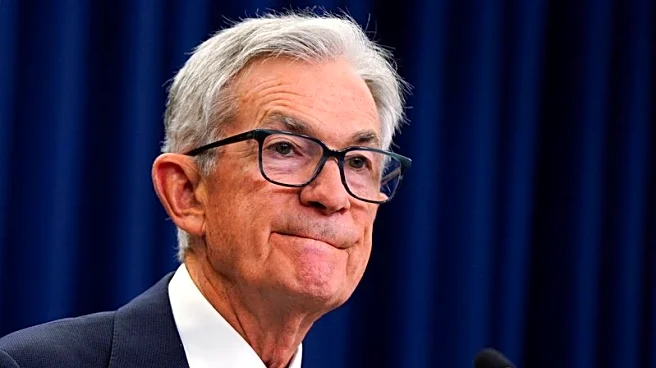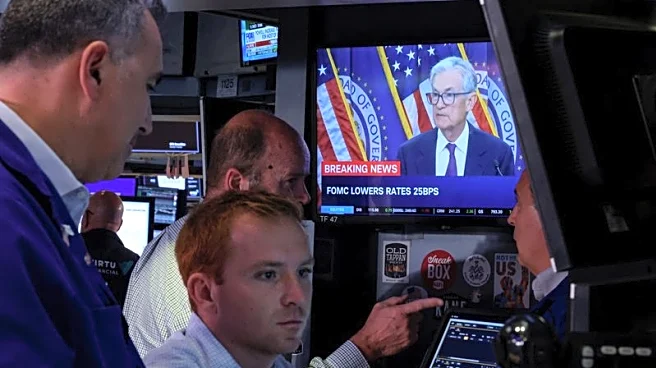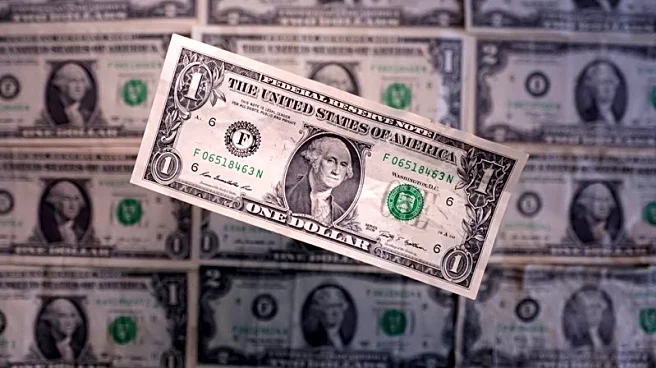What's Happening?
The Federal Reserve has announced a reduction in the benchmark interest rate by a quarter of a percentage point, setting it within a range of 4% to 4.25%. This decision was made with an 11-to-1 vote, with Governor Steven Miran opposing a larger cut. The rate cut is part of a broader strategy to manage risks associated with slowing job growth and rising inflation. The Fed's updated federal funds rate forecast suggests the possibility of additional cuts this year and next, indicating a more lenient monetary policy approach. This move has influenced the gold market, with prices rising due to lower borrowing costs, which enhance the attractiveness of gold trading. Gold prices have increased by approximately 41% since the beginning of 2025, driven by strong buying from global central banks and safe-haven flows.
Why It's Important?
The Federal Reserve's decision to cut interest rates is significant for several reasons. It reflects the central bank's response to economic indicators pointing to a slowdown in job growth and persistent inflation. Lower interest rates typically reduce borrowing costs, which can stimulate economic activity but also impact currency values. In this case, the U.S. dollar initially fell before recovering, affecting international trade dynamics. For the gold market, lower rates increase the appeal of gold as an investment, leading to higher prices. This trend is further supported by geopolitical tensions and central bank purchases of gold bullion. The Fed's actions could have broader implications for financial markets, influencing investor behavior and economic forecasts.
What's Next?
The Federal Reserve's interest rate cut signals potential further easing, with projections indicating additional cuts through the end of the year and into 2026. This could lead to continued volatility in currency and commodity markets, particularly affecting gold prices. Stakeholders, including investors and policymakers, will closely monitor economic indicators such as inflation rates and employment figures to assess the impact of these monetary policy changes. The Fed's approach may also influence global economic strategies, as other central banks react to shifts in U.S. policy.
Beyond the Headlines
The interest rate cut by the Federal Reserve highlights the ongoing challenges in balancing economic growth with inflation control. It underscores the complexities of monetary policy in a globalized economy, where decisions in one country can have ripple effects worldwide. The focus on gold as a safe-haven asset reflects broader concerns about economic stability and geopolitical risks. This development may prompt discussions on the sustainability of current economic models and the role of central banks in managing financial crises.











